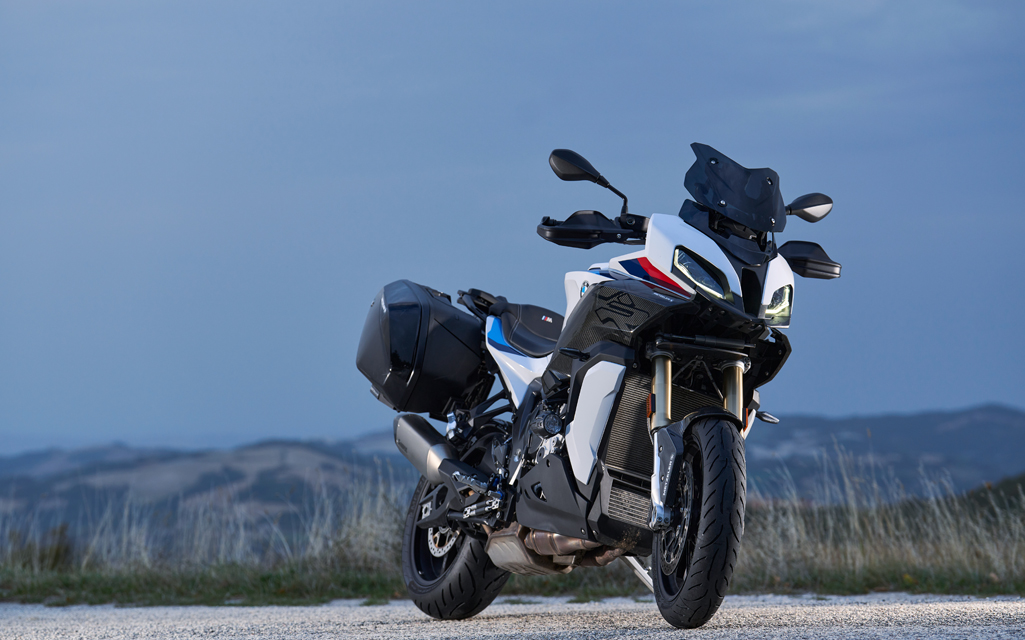Over the past 50 years, some famous car designers have tried to craft motorcycles, but most have struggled to find resonance with the two-wheeled community. Among them, icon Giorgetto Giugiaro stands as an interesting example. Though he is recognized as perhaps the most influential talent in automotive design history, motorcycles by Giugiaro and his firm Italdesign have repeatedly been rejected by the fickle motorcycle market, with one notable exception.
In 1973, Giugiaro was commissioned by Japanese industrial giant Suzuki to design a ground-breaking new model, the rotary-engined RE-5. At a time when the visual differences between most of the world’s motorcycles were minute, often nothing more than subtle variations of common shapes, Giugiaro dared to impose a strong theme and apply a designer’s touch to all of the motorcycle’s components, themselves usually nothing more than afterthoughts.
Taking a cylinder motif, the RE-5 carried the entire instrument cluster inside an integrated, automotive-style binnacle, housed behind a blue-tinted, operable visor. The brake light and side markers, headlamp and airbox cover repeated this theme, while the tank and seat were shaped as one continuous volume. It was a bold departure from the norm, and one that invited a great deal of criticism.
Cycle World magazine named the RE-5 one of the ten worst bikes of all time, saying the design had “the aesthetic appeal of a high-speed train wreck.” Suzuki agreed. Less than two years after its introduction, the company updated the design, eliminating the cylinder theme, replacing lighting and instrumentation with conventional off-the-shelf items, and painting the whole bike in decidedly neutral dark colours. It didn’t help sales, and the RE-5 was quietly removed from the catalogue in 1976.
Later that same year, Giugiaro designed the 350 cc Ipotesi, a smart little roadster for legendary Italian brand MV Agusta. MV was in steep decline, being pinched by the dual pressures of less expensive, superior quality Japanese rivals and ongoing labour problems. The Ipotesi was an effort to arrest the slide by introducing an attractive, affordable, small-engined model.
Giugiaro’s design was indeed very pretty, retaining his signature crisp-edge styling language, but this time maintaining classical proportions and integrating styling elements into the mechanicals, rather than ignoring or covering them up. His repetition of cooling-fin forms on the side panels and engine casings were clean and modern details that didn’t stray too far from convention. Clearly, he had learned from the RE-5 experience, but the machine was almost anonymous and as a result didn’t boost sales.
Giugiaro continued to court Suzuki in years to come. In 1979, he participated in a design competition sponsored by the Japanese manufacturer, and German magazine Motorrad, to produce a half-faired sport-touring concept model based on the then all-conquering Suzuki GS850. Here, in the modern medium of plastic and with more surface area to play with, Giugiaro was in his element. The crisp-edged lines so prevalent in his automotive work were employed to full effect, resulting in an elegant and thoroughly modern-looking motorcycle for the time. However, once more the car designer’s instincts to integrate details like lighting and treat mechanicals as old-fashioned annoyances were poorly received by the motorcycle public and competition judges.
French motorcycle historian and retired Yamaha product planner Francois-Marie Dumas called Giugiaro’s GS concept “Neither fun nor intelligent, practical or inspired.” The Giugiaro Suzuki, he said, “fails to acquit itself in any way.” The competition was won by the iconic Katana proposal from Target Design, a tiny, three-man industrial-design firm from Germany, which incidentally also beat a submission from Porsche.
In the decades that followed Giugiaro’s 1970s flirtation with motorcycles, his firm would only dabble in two-wheel design a few more times as he restricted himself to commuter concepts. In the early ’80s, Italdesign produced the Colibri A5 moped for Slovenian brand Tomos. The clean look of the cover-all theme won over many admirers looking for a tidy, product-like transportation solution. In an era when mopeds were dirty, motorcycle-bicycle hybrids cluttered with exposed mechanisms, the Colibri stood out as a stylish urban accessory rather than a utilitarian tool. It went on to influence the design direction of mopeds throughout the ’80s.
Automobile design is a study of line and contour, while motorcycle design is principally a study of volume and proportion, where the interior and exterior combine together. Giugiaro consistently styled motorcycles like cars, treating them as closed shapes with sweeping lines that tried to unify the unique components of fuel tank, seat, tail and fairings. The relationship between those sculpted forms and the motor, chassis and other mechanical parts was ignored, thus alienating the aesthetic traditions of the vast majority of motorcyclists, and the wonderful interplay opportunity they present.
As with his cars, it could be argued that he was more influential on the low end of the market spectrum than with the exotic. Which was more important to the history of car design, the humble VW Golf or the Maserati Boomerang concept car? Within his motorcycle portfolio most designs ended in failure, but the humble Tomos would go on to literally change the shape of mopeds across Europe for the next 20 years.






